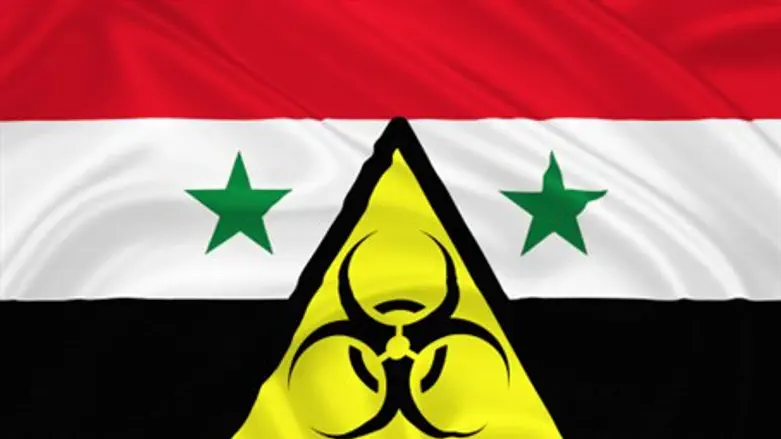
Weapons experts have concluded for the first time that mustard gas was used during fighting in Syria in August, an official at the global chemical arms watchdog told AFP Thursday.
The deadly gas was used in the flashpoint town Marea in the northern province of Aleppo on August 21, the source from the Organization for the Prohibition of Chemical Weapons (OPCW) said.
"We have determined the facts, but we have not determined who was responsible," the source, who asked not to be named, told AFP.
A confidential report has been sent to the member states of the OPCW, which are due to meet for the UN body's annual conference at the end of November at its headquarters in The Hague.
Syrian rebels and aid groups said that at the end of August dozens of people were affected by a chemical attack on Marea, where moderate opposition rebels and militants from the Islamic State (ISIS) group were battling.
Doctors without Borders (MSF) said it had treated four civilians from one family. According to patients at an MSF hospital in Aleppo, a mortar hit their house and "after the explosion a yellow gas filled the living room."
According to rebels on the ground, more than 50 mortar shells were launched on the town that day by ISIS jihadists.
That statement followed comments from American officials who said that the United States government has test results from an ISIS attack in Syria that confirm the terror group used a mustard agent as a weapon.
Allegations that the jihadist IS militants have been using chemical arms have been increasing in recent months in both Iraq and Syria.
Intelligence believes that ISIS has manufactured the mustard gas, not taken stores of the weapon leftover from Syrian President Bashar Al-Assad's regime.
Others maintain that ISIS must have stumbled upon a stockpile during its conquests in Iraq and Syria. In July, several inspectors involved in the Syrian stockpile destruction revealed to the Wall Street Journal that they were deceived, and that Assad had managed to keep significant stores of mustard gas despite the international operation.
Specifically, a red flag was raised for inspectors by Syria's claim of only having 20 tons of mustard agent, given intelligence expectations of hundreds of tons. The regime said it had destroyed hundreds of tons of mustard agent in fire pits before the inspections deal - even though it took other countries decades to destroy similar massive stockpiles.
And in June 2014, ISIS seized a weapons complex thought to have held hundreds of tons of lethal sarin and mustard gasses: the al-Muthanna complex, located 60 miles north of Baghdad, which was a central base of former Iraqi dictator Saddam Hussein's chemical weapons program.